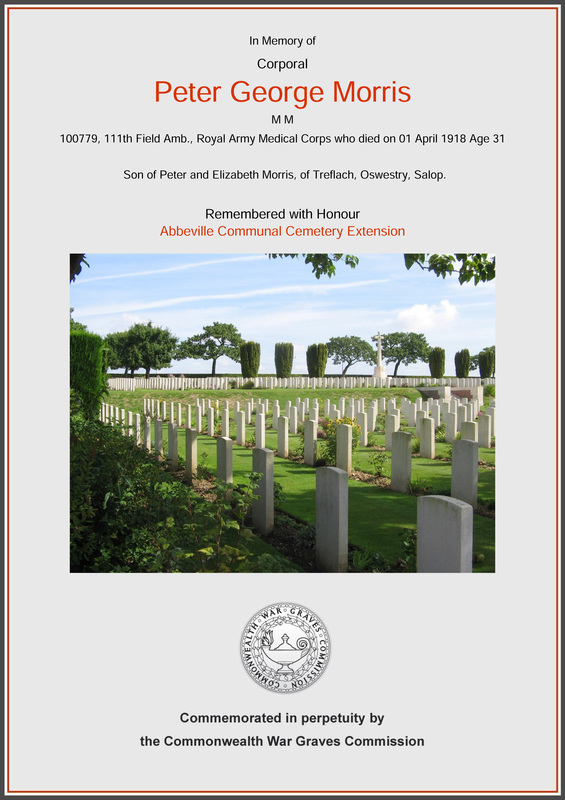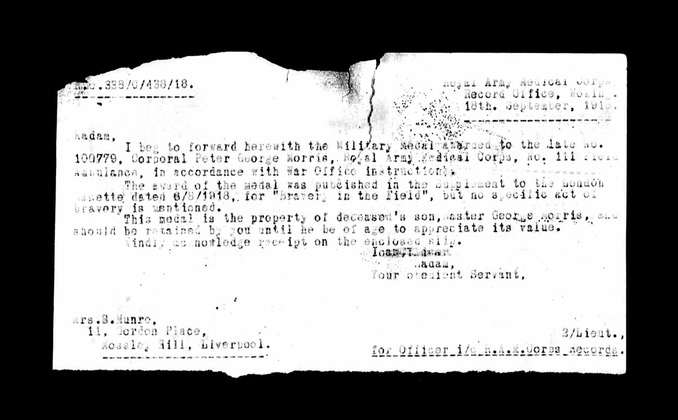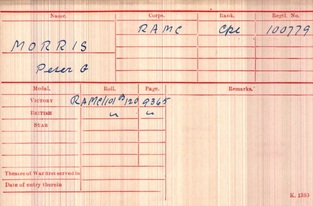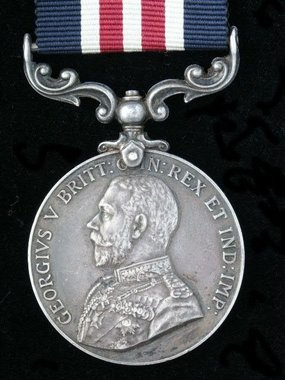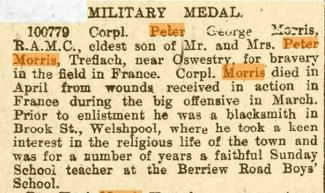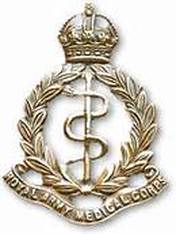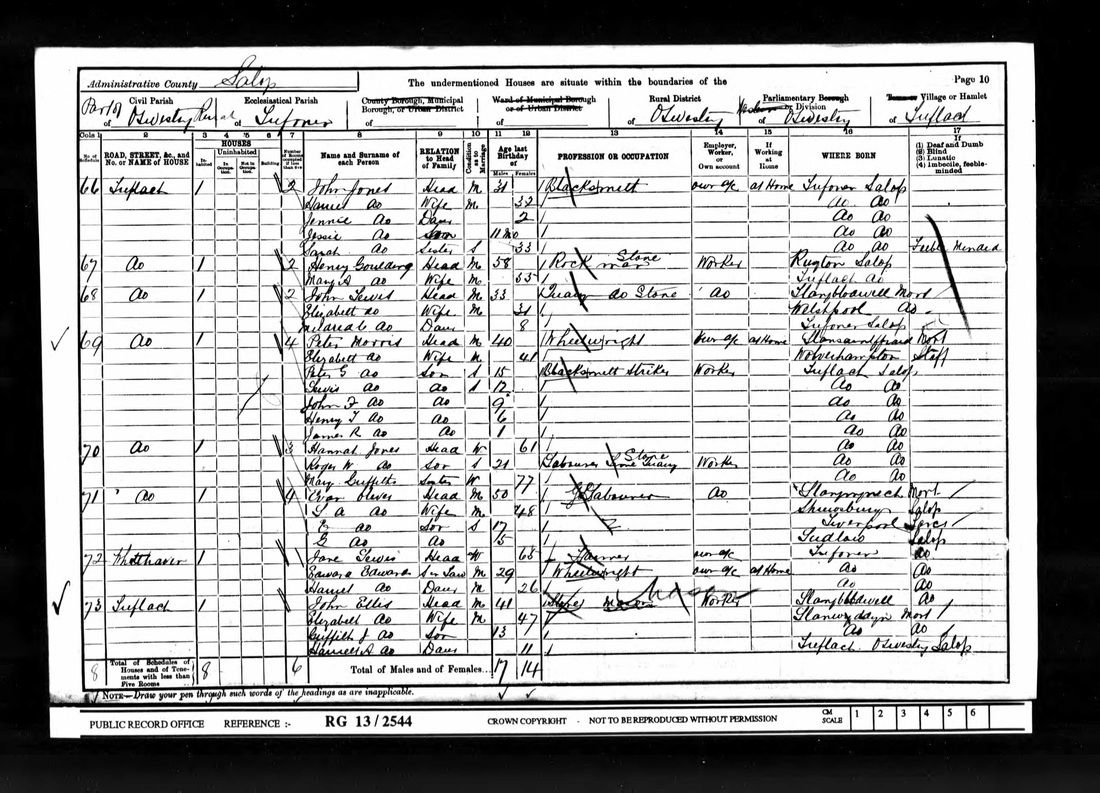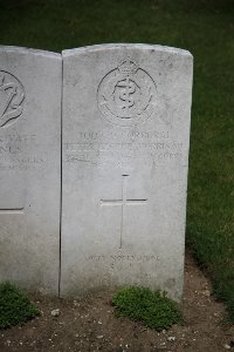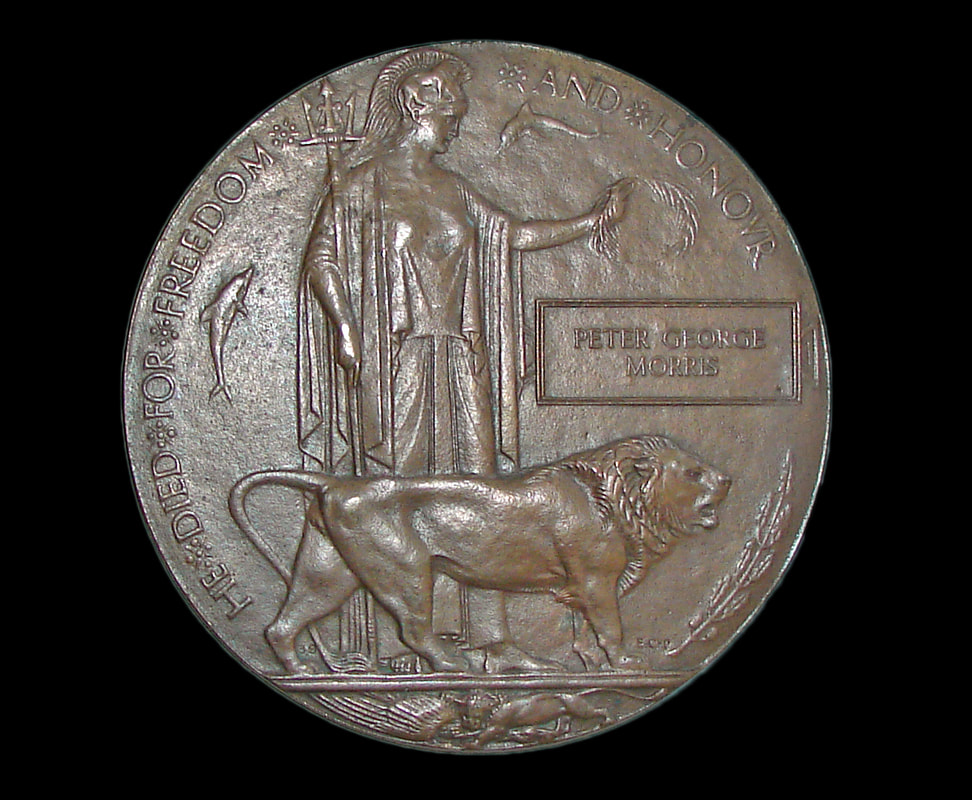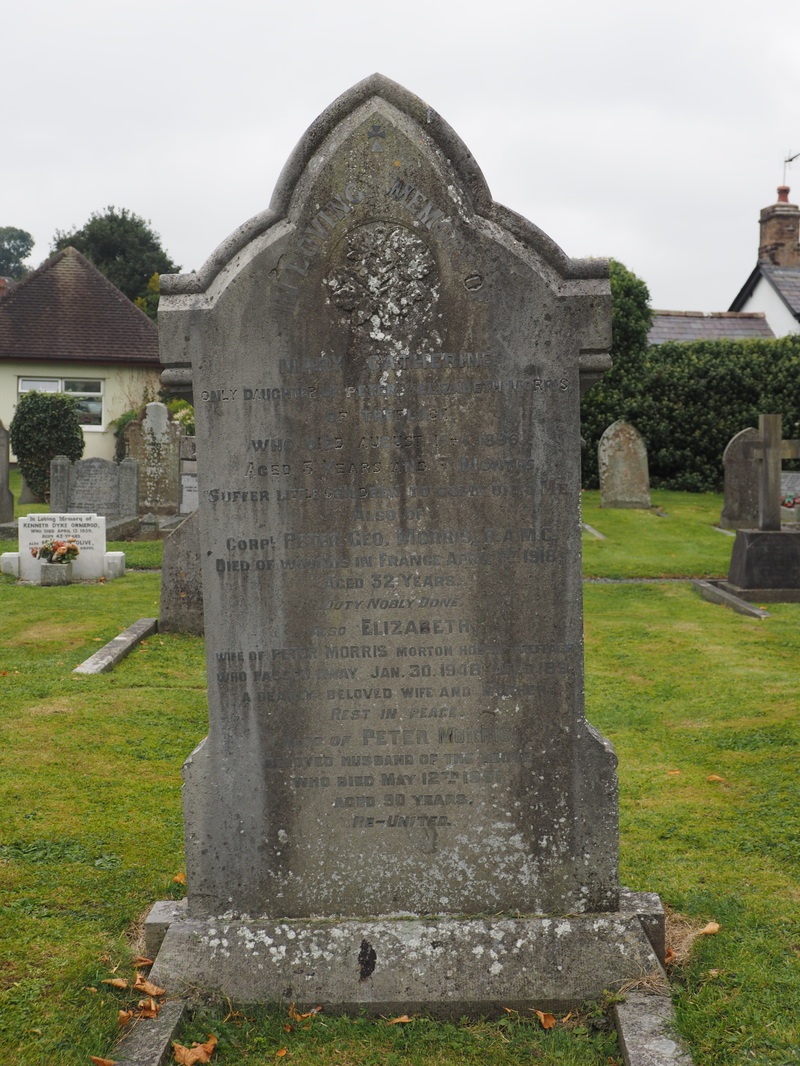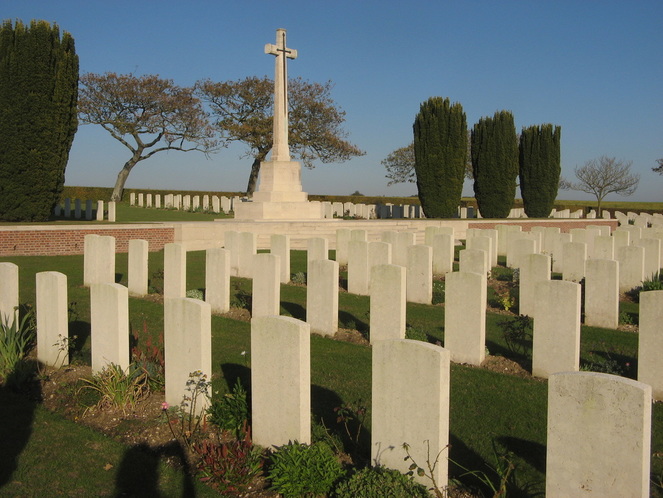Peter George Morris (M M)
|
Introduction
Peter George Morris (Military Medal) was the eldest of five son's of Peter and Elizabeth Morris of Morton House, Treflach. He had also had an elder sister but she had died aged 3 the same year that he was born. In his childhood he attended Nantmawr British School and appears on their Roll of Honour He married Mary Sides in 1912 and they had one son George who was born on 14th October 1914 in Chestnut Cottage, Welshpool, sadly his wife died just one week later on 21st October 1914. Young George went to live in Liverpool, one can only presume with a relative or guardian. A letter written from the Army after Peter's death was sent to a Mr's Munro regarding the Mlitary Medal that young George's father had won and is shown below. It is difficult to read so a transcription is included below the original. |
Prior to the war Peter had served as soldier in the Montgomeryshire Yeomanry. A blacksmith by trade he enlisted for active service on 7th August 1915.
Transcription
" I beg to forward herewith the Military Medal awarded to the late 100779 Corporal Peter George Morris, Royal Army Medical Corps, 111 Field Ambulance in accordance with War Office instructions
The award of the medal was publicised in the London Gazette dated 6/8/1918 for "Bravery in the Field" but no specific act of bravery is mentioned. The medal is the property of the deceased's son Master George Morris and should be retained by you until he be of age to appreciate its value"
" I beg to forward herewith the Military Medal awarded to the late 100779 Corporal Peter George Morris, Royal Army Medical Corps, 111 Field Ambulance in accordance with War Office instructions
The award of the medal was publicised in the London Gazette dated 6/8/1918 for "Bravery in the Field" but no specific act of bravery is mentioned. The medal is the property of the deceased's son Master George Morris and should be retained by you until he be of age to appreciate its value"
|
Military Record including Regimental and Battalion Information
Peter George Morris joined the Royal Army Medical Corps and was initially based at Woolwich where on the 1st November 1915 he was promoted to Corporal. He embarked at Southampton on 9th October 1916 as a reinforcement arriving in Rouen the next day where he was posted to serve with 111th Field Ambulance. Peter suffered a couple of bouts of illness in December 16 and August 17. Records show that he was awarded the military medal for an act of “Bravery in the Field” As stated above this was announced on the 6th August 1918 in the supplement to the London Gazette. He was wounded on the 21st March 1918 and admitted to 113th Field Ambulance with shrapnel wounds to his right arm and leg. He was transferred to No 2 Casualty Clearing Station on the same day. On 26th March he was moved to No 3 Australian General Hospital in Abbeville but sadly died of his wounds on 1st April 1918 although in the War Diary for the 11th Field Ambulance his death is recorded on the 29th April. He is buried at Abbeville Communal Cemetary Extension. |
|
Royal Army Medical Corp Historical Information
'In Arduis Fidelis' (meaning 'Faithful in Adversity') The earliest medical services in the British armed forces date back to King Charles II’s formation of a regular standing army. Each regiment was provided with a surgeon and assistant surgeon, both as commissioned officers. |
In 1855, in the midst of severe public and journalistic criticism of army medical provision during he Crimean War (1854-56), a unified Medical Staff Corps was formed to provide other ranks medical personnel. This corps was renamed the Army Hospital Corps in 1857, then the Medical Staff Corps in 1884.
In the meantime, in 1873, the provision of medical officers on a regimental basis was abolished and in its place a single Army Medical Department established. Finally, in 1898, the Department and Corps were merged into a single unit, known as the Royal Army Medical Corps (RAMC), whose personnel were sent straight into action in the Sudan (1896-98) and the Boer War (1899-1902).
As with the Crimean War, the South African conflict demonstrated the importance of army medical provision and the fatal consequences when hygiene advice was ignored. Thus, by the outbreak of the First World War in 1914, the unit was recognised as vital to any national war effort. During that conflict its personnel served in every theatre of war and it expanded to 154,000 other ranks and 13,000 officers. The RAMC lost 743 officers and 6,130 soldiers killed.
Members of the unit and its predecessors have been awarded 27 Victoria Crosses (VC), including two out of only three VC bars ever awarded (designating a second award of the VC to the same person). An RAMC private, 19-year-old Michelle Norris, was also the first female recipient of the Military Cross (MC), in recognition of her actions on 11 June 2006 at Al Amarah in Iraq.
In spite of all this, the RAMC is a non-fighting arm whose members may only use their weapons in self-defence.
This is symbolised on parade by its officers holding their scabbard with their left hand rather than drawing their swords, and by its other ranks never fixing their bayonets. Its involvement in every theatre of war the Army has seen means it has no battle honours.
The corps’s cap badge is a crown above a laurel wreath containing a serpent entwined up a staff. This is the staff of Asclepius, the ancient Greek god of healing and medicine.
In the meantime, in 1873, the provision of medical officers on a regimental basis was abolished and in its place a single Army Medical Department established. Finally, in 1898, the Department and Corps were merged into a single unit, known as the Royal Army Medical Corps (RAMC), whose personnel were sent straight into action in the Sudan (1896-98) and the Boer War (1899-1902).
As with the Crimean War, the South African conflict demonstrated the importance of army medical provision and the fatal consequences when hygiene advice was ignored. Thus, by the outbreak of the First World War in 1914, the unit was recognised as vital to any national war effort. During that conflict its personnel served in every theatre of war and it expanded to 154,000 other ranks and 13,000 officers. The RAMC lost 743 officers and 6,130 soldiers killed.
Members of the unit and its predecessors have been awarded 27 Victoria Crosses (VC), including two out of only three VC bars ever awarded (designating a second award of the VC to the same person). An RAMC private, 19-year-old Michelle Norris, was also the first female recipient of the Military Cross (MC), in recognition of her actions on 11 June 2006 at Al Amarah in Iraq.
In spite of all this, the RAMC is a non-fighting arm whose members may only use their weapons in self-defence.
This is symbolised on parade by its officers holding their scabbard with their left hand rather than drawing their swords, and by its other ranks never fixing their bayonets. Its involvement in every theatre of war the Army has seen means it has no battle honours.
The corps’s cap badge is a crown above a laurel wreath containing a serpent entwined up a staff. This is the staff of Asclepius, the ancient Greek god of healing and medicine.
Census data
The 1891 census below shows Peter George aged just 15 living and working at home in Morton House Treflach, working as a Blacksmith at home with his father who was a Wheelwright.
The 1891 census below shows Peter George aged just 15 living and working at home in Morton House Treflach, working as a Blacksmith at home with his father who was a Wheelwright.
|
Memorial and War Grave Information
Corporal Peter George Morris M. M. 100779 Royal Army Medical Corps is buried at Abbeville Communal Cemetery Extension where his gravestone bears the words "Duty Nobly Done - R I P" He is also remembered on his parents and young sisters grave in Trefonen Churchyard |
Historical Information.
For much of the First World War, Abbeville was headquarters of the Commonwealth lines of communication and No.3 BRCS, No.5 and No.2 Stationary Hospitals were stationed there variously from October 1914 to January 1920. The communal cemetery was used for burials from November 1914 to September 1916, the earliest being made among the French military graves.
The extension was begun in September 1916. During the early part of the Second World War, Abbeville was a major operational aerodrome, but the town fell to the Germans at the end of May 1940. On 4 June, an attempt was made by the 51st Division, in conjunction with the French, to break the German bridgehead, but without success. Towards the end of 1943, eight large ski shaped buildings appeared near Abbeville. These proved to be storage units for flying bomb components an they were heavily bombed by Commonwealth air forces. Abbeville was retaken on 4 September 1944 by Canadian and Polish units.
Abbeville Communal Cemetery contains 774 Commonwealth burials of First World War and 30 from the Second. The Extension contains 1,754 First World War burials and 348 from the Second.
The Commonwealth sections of both cemetery and extension were designed by Sir Reginald Blomfield.
click on the link below for more information
http://www.cwgc.org/find-a-cemetery/cemetery/7700/ABBEVILLE%20COMMUNAL%20CEMETERY%20EXTENSION
For much of the First World War, Abbeville was headquarters of the Commonwealth lines of communication and No.3 BRCS, No.5 and No.2 Stationary Hospitals were stationed there variously from October 1914 to January 1920. The communal cemetery was used for burials from November 1914 to September 1916, the earliest being made among the French military graves.
The extension was begun in September 1916. During the early part of the Second World War, Abbeville was a major operational aerodrome, but the town fell to the Germans at the end of May 1940. On 4 June, an attempt was made by the 51st Division, in conjunction with the French, to break the German bridgehead, but without success. Towards the end of 1943, eight large ski shaped buildings appeared near Abbeville. These proved to be storage units for flying bomb components an they were heavily bombed by Commonwealth air forces. Abbeville was retaken on 4 September 1944 by Canadian and Polish units.
Abbeville Communal Cemetery contains 774 Commonwealth burials of First World War and 30 from the Second. The Extension contains 1,754 First World War burials and 348 from the Second.
The Commonwealth sections of both cemetery and extension were designed by Sir Reginald Blomfield.
click on the link below for more information
http://www.cwgc.org/find-a-cemetery/cemetery/7700/ABBEVILLE%20COMMUNAL%20CEMETERY%20EXTENSION
